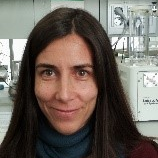Natural Antioxidants in Human Health and Disease
A special issue of International Journal of Molecular Sciences (ISSN 1422-0067). This special issue belongs to the section "Bioactives and Nutraceuticals".
Deadline for manuscript submissions: closed (15 April 2023) | Viewed by 27590
Special Issue Editor
Interests: metabolic disorders; cancer; inflammation; oxidative stress; natural compounds
Special Issues, Collections and Topics in MDPI journals
Special Issue Information
Dear Colleagues,
Oxidative stress, defined as an overproduction of reactive oxygen (ROS) and nitrogen species (RNS) in cells and tissues, plays a pathogenic role in the development of several inflammatory chronic diseases, especially in the case of atherosclerosis, hypertension, obesity, diabetes, metabolic syndrome, and cancer. The increase in ROS and RNS can cause oxidative damage and tissue dysfunction due to structural damage to macromolecules, giving rise to senescent and degenerative lesions in cells. Natural compounds are a source of exogenous antioxidants possibly useful in the management of these pathologies. They have long been considered antioxidant molecules, and most of their benefits have been related to their free radical scavenging properties. Recent findings have shown that these compounds have multiple mechanisms of action in the treatment or prevention of oxidative disorders. Natural antioxidants could interact in humans with pleiotropic effects on a variety of tissues involved in stress response pathways. However, their diversity and chemical complexity mean that much remains to be understood about the mechanisms by which these compounds influence health.
This Special Issue is a collection of research and review articles on the preclinical and clinical benefits of natural antioxidants, with special interest in human health and disease. The aim of this Special Issue is to collect literature that reflects the actual state of the art and increase our knowledge of natural antioxidants and the mechanism of action in their physiological and pathophysiological role. Further, their bioavailability and biotransformation events should be considered to identify the most likely final effectors in cells and tissues.
As the Guest Editor of this Special Issue, I cordially invite researchers from all around the world to contribute by submitting original research articles, long and mini review papers, short notes, and opinions in accordance with their expertise.
Dr. María Herranz-López
Guest Editor
Manuscript Submission Information
Manuscripts should be submitted online at www.mdpi.com by registering and logging in to this website. Once you are registered, click here to go to the submission form. Manuscripts can be submitted until the deadline. All submissions that pass pre-check are peer-reviewed. Accepted papers will be published continuously in the journal (as soon as accepted) and will be listed together on the special issue website. Research articles, review articles as well as short communications are invited. For planned papers, a title and short abstract (about 250 words) can be sent to the Editorial Office for assessment.
Submitted manuscripts should not have been published previously, nor be under consideration for publication elsewhere (except conference proceedings papers). All manuscripts are thoroughly refereed through a single-blind peer-review process. A guide for authors and other relevant information for submission of manuscripts is available on the Instructions for Authors page. International Journal of Molecular Sciences is an international peer-reviewed open access semimonthly journal published by MDPI.
Please visit the Instructions for Authors page before submitting a manuscript. There is an Article Processing Charge (APC) for publication in this open access journal. For details about the APC please see here. Submitted papers should be well formatted and use good English. Authors may use MDPI's English editing service prior to publication or during author revisions.
Keywords
- ROS
- oxidative disorders
- molecular pathways
- inflammation
- biotransformation
Benefits of Publishing in a Special Issue
- Ease of navigation: Grouping papers by topic helps scholars navigate broad scope journals more efficiently.
- Greater discoverability: Special Issues support the reach and impact of scientific research. Articles in Special Issues are more discoverable and cited more frequently.
- Expansion of research network: Special Issues facilitate connections among authors, fostering scientific collaborations.
- External promotion: Articles in Special Issues are often promoted through the journal's social media, increasing their visibility.
- Reprint: MDPI Books provides the opportunity to republish successful Special Issues in book format, both online and in print.
Further information on MDPI's Special Issue policies can be found here.






